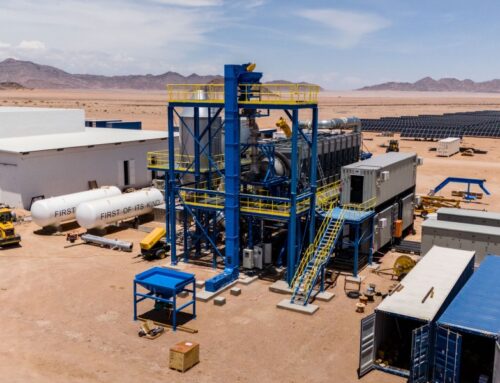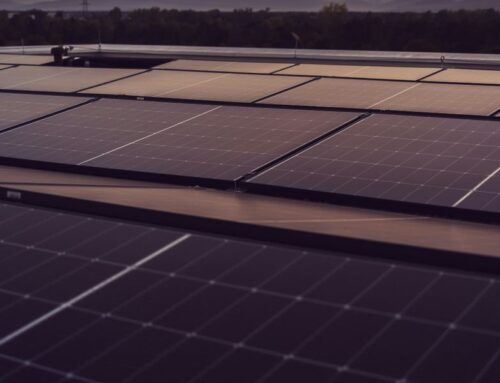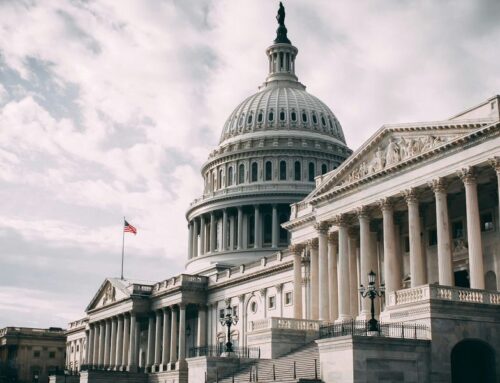How frogs can tell us about our environment on the Gulf Coast
June 23, 2025
POPULATION COULD INCREASE BY 150,000. ON ANY GIVEN FLORIDA NIGHT. YOU CAN CLEARLY HEAR THE SOUNDS OF MOTHER NATURE. BUT AS GULF COAST NEWS REPORTER EVAN DEAN FOUND OUT THE SOUNDS THAT YOU DON’T HEAR MIGHT REVEAL THE HEALTH OF OUR LOCAL ENVIRONMENT. >> WHEN THE SUMMER SUN SETS ON THE CAMPUS OF FGCU, IT GETS AWFULLY QUIET. IT’S JUST COOL TO QUITE A NIGHT FOR THIS GROUP. THAT MEANS IT’S THE PERFECT TIME TO BEGIN A WEEK PROFESSOR, WHENEVER HAND GUIDE STUDENTS ON WHAT’S KNOWN AS ROCK TRUTH IS, IT’S LESS ABOUT WHAT THEY SEE AND MORE ABOUT WHAT THEY HEAR. IT CONNECTS YOU TO THIS LANDSCAPE IN A DIFFERENT WAY. IF YOU RECOGNIZE THAT THE CUBAN TREE FROG, YOU CAME THE GROUP GOES OUT ONCE A MONTH IN THE STOPPING AT ABOUT A DOZEN SPOTS ON OR NEAR CAMPUS. DID YOU GUYS HEAR THE GREENHOUSE? >> IF THEY LISTEN CAREFULLY FOR 3 MINUTES AT EACH SITE, RECORDING WHAT FROGS THEY HEAR AND THE INTENSITY OF THE CALLS THEY’RE WAS CALLING. >> BUT THERE WERE SO MANY CALLING THAT THERE ARE OVERLAPPING WITH ONE ANOTHER. IT’S ONE OF MY FAVORITE TIMES OF THE YEAR. >> RECENT GRADUATES, SALINAS, A BIOS HAS BECOME A FROG. WATCH REGULAR. THAT’S GREAT, TOO. >> JUST KIND OF SEE WHAT’S OUT THERE. NEVER KNOW WHAT YOU’RE GONNA FIND TO. YOU. >> FRAUD. WATCH. USA IS A NATIONWIDE EFFORT. IT’S GREENHOUSE THROWN FOR THOSE THINKING THINK AT A PRETTY TINY. THIS MARKS THE 26TH YEAR OF IT HAPPENING IN OUR AREA OVER THAT TIME, WE’VE SEEN SUCH GROWTH ON THE GULF COAST AND THAT’S IMPACTED WHAT THEY HEAR OUT HERE. >> YOU CAN CLEARLY SEE, YOU KNOW, A PLACE THAT WAS UNDEVELOPED THAT BECOMES DEVELOPED ALMOST ALWAYS USE THE PRODUCTS. BUT DOES THAT HAVE TO HAPPEN? >> EVER HIM ARGUES THERE’S A BETTER WAY AFTER ALL THE SOUNDS OF THE NIGHT. TELL US MORE THAN JUST WHAT FROGS ARE HERE. >> THEY CAN TELL US THE SHAPE OF THE PLACE WE ALL CALL HOME. IF YOU BUILD THE DEVELOPMENT. >> THAT HAS ENOUGH WETLAND TO MAINTAIN A FROG POPULATION. THE OTHER THING YOU HAVE IS ENOUGH WETLAND TO ABSORB ANY RAINFALL. SO YOUR HOUSE IS COMPLIED. YOU’VE GOT ENOUGH WETLANDS TO HOLD THAT WATER BACK. SO IT DOESN’T GET DISCHARGED DOWNSTREAM AND PROBABLY FROM THE COAST. YOU KNOW THAT THOSE THINGS ARE CONNECTED. SO WOULD YOU LIKE FROGS ARE NOT? THEY’RE REALLY NICE WAY OF LOOKING AT. WE ARE WE GOOD STEWARDS OF THIS LANDSCAPE OR NOT? AND I THINK WE CAN DO BETTER. >> REPORTING LOCAL FROM AROUND
How frogs can tell us about our environment on the Gulf Coast
Updated: 9:24 PM EDT Jun 23, 2025
When the sun sets on Florida Gulf Coast University in the summertime, it gets awfully quiet on campus. But for Win Everham and his group of students, that means it’s the perfect time to begin their work. Everham guides students on what’s known as “FrogWatch.” Truth is, it’s less about what they see – and more about what they hear. “It connects you to this landscape in a different way if you recognize — ‘Oh, that’s a Cuban Tree Frog. Oh, that’s a Cane Toad,’” Everham said. The group goes out once a month in the summer, stopping at about a dozen spots on or near campus. They listen carefully for three minutes at each site, recording what frogs they hear and the intensity of their calls. Recent FGCU graduate Celina Ceballos has become a FrogWatch regular. “It’s one of my favorite times of the year,” she said. “It’s great to just kind of see what’s out there. You never know what you’re going to find.” FrogWatch USA is a nationwide effort. This marks the 26th year of it happening in southwest Florida. Over that time, there’s been significant population growth on the Gulf Coast. That’s impacted what researchers hear out in the field. “You can clearly see, a place that was undeveloped that becomes developed, almost always you lose the frogs,” Everham said.But does that have to happen? Everham argues there’s a better way. After all, the sounds of the night can indicate more than just what frogs are in the area. They can help indicate the shape of the environment on the Gulf Coast. “If you build a development that has enough wetland to maintain a frog population, the other thing you have is enough wetland to absorb the heavy rainfall so your houses don’t flood. You’ve got enough wetlands to hold that water back, so it doesn’t get discharged downstream and cause harmful algal blooms on the coast,” Everham said. “Those things are connected. So, whether you like frogs or not, they’re a really nice way of looking at: are we good stewards of this landscape or not? And I think we can do better.” DOWNLOAD the free Gulf Coast News app for your latest news and alerts on breaking news, weather, sports, entertainment, and more.
When the sun sets on Florida Gulf Coast University in the summertime, it gets awfully quiet on campus.
But for Win Everham and his group of students, that means it’s the perfect time to begin their work.
Everham guides students on what’s known as “FrogWatch.” Truth is, it’s less about what they see – and more about what they hear.
“It connects you to this landscape in a different way if you recognize — ‘Oh, that’s a Cuban Tree Frog. Oh, that’s a Cane Toad,’” Everham said.
The group goes out once a month in the summer, stopping at about a dozen spots on or near campus.
They listen carefully for three minutes at each site, recording what frogs they hear and the intensity of their calls.
Recent FGCU graduate Celina Ceballos has become a FrogWatch regular.
“It’s one of my favorite times of the year,” she said. “It’s great to just kind of see what’s out there. You never know what you’re going to find.”
FrogWatch USA is a nationwide effort. This marks the 26th year of it happening in southwest Florida.
Over that time, there’s been significant population growth on the Gulf Coast. That’s impacted what researchers hear out in the field.
“You can clearly see, a place that was undeveloped that becomes developed, almost always you lose the frogs,” Everham said.
But does that have to happen? Everham argues there’s a better way.
After all, the sounds of the night can indicate more than just what frogs are in the area. They can help indicate the shape of the environment on the Gulf Coast.
“If you build a development that has enough wetland to maintain a frog population, the other thing you have is enough wetland to absorb the heavy rainfall so your houses don’t flood. You’ve got enough wetlands to hold that water back, so it doesn’t get discharged downstream and cause harmful algal blooms on the coast,” Everham said. “Those things are connected. So, whether you like frogs or not, they’re a really nice way of looking at: are we good stewards of this landscape or not? And I think we can do better.”
DOWNLOAD the free Gulf Coast News app for your latest news and alerts on breaking news, weather, sports, entertainment, and more.
Search
RECENT PRESS RELEASES
Related Post




